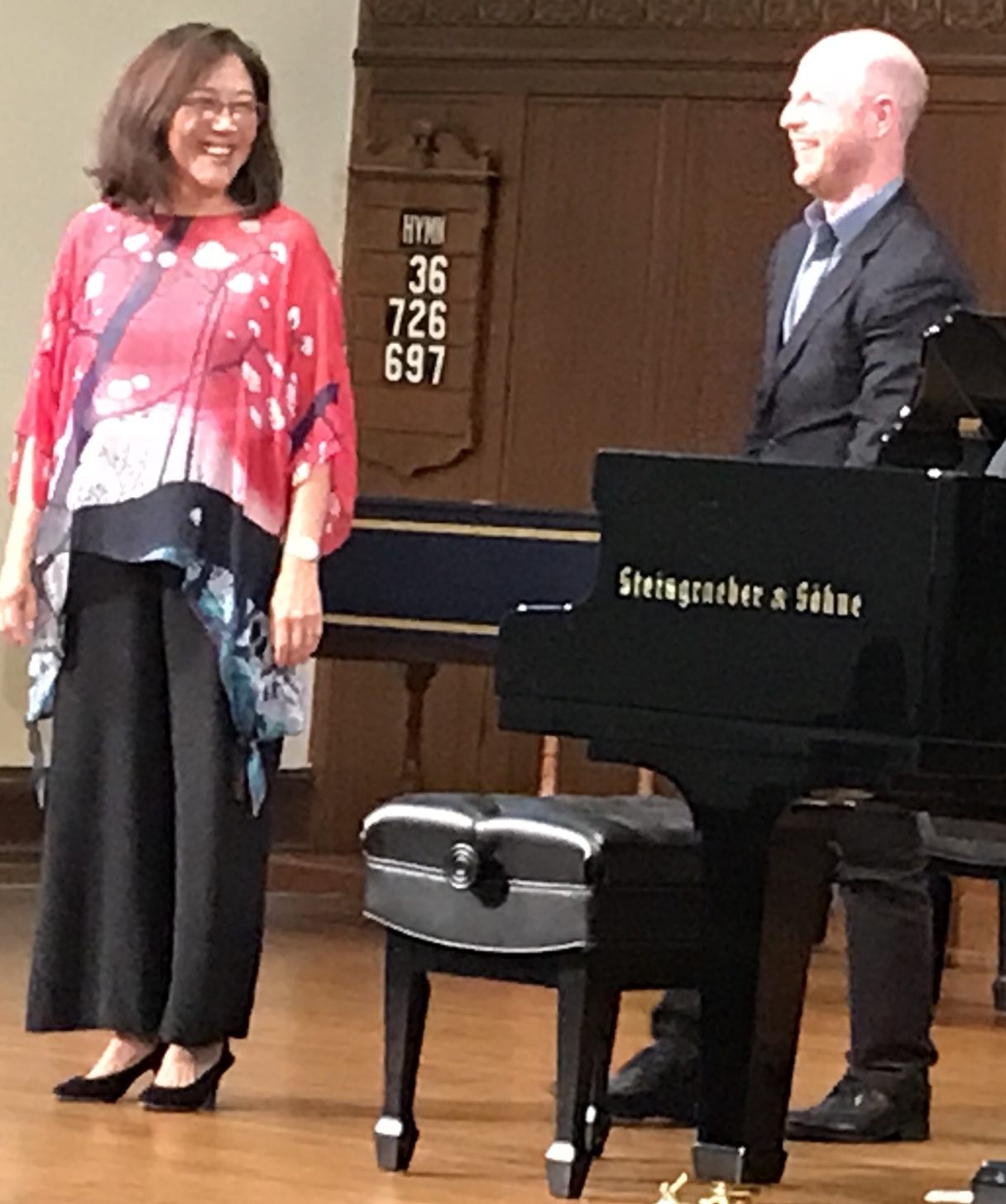|
Symphony
FROM THE NEW WORLD TO THE OLD WORLD
by Peter Lert
Saturday, June 14, 2025
Chamber
MC2 DUO RECITAL CLOSES 222'S SEASON
by Terry McNeill
Saturday, June 14, 2025
Choral and Vocal
CANTIAMO SONOMA'S LUSCIOUS A CAPELLA SINGING IN SEASON ENDING CONCERT
by Pamela Hicks Gailey
Sunday, June 8, 2025
Symphony
SRS SEASON ENDS WITH RESOUNDING TA-TA-TA-BANG
by Terry McNeill
Sunday, June 1, 2025
Symphony
YOUTHFUL VIRTUOSITY ON DISPLAY AT USO'S MAY CONCERTS
by Peter Lert
Saturday, May 17, 2025
Symphony
MYSTICAL PLANETS AND LIVELY GERSHWIN ORTIZ AT FINAL SRS CONCERT
by Peter Lert
Sunday, May 4, 2025
Symphony
VSO'S CONCERT MUSIC OF TIME, MUSIC OF PLACE
by Peter Lert
Sunday, April 27, 2025
VOCAL ELEGANCE AND FIRE AT THE 222'S RECITAL APRIL 26
by Pamela Hicks Gailey
Saturday, April 26, 2025
CANTIAMO SONOMA SINGS AN INSPIRED GOOD FRIDAY MOZART REQUIEM CONCERT
by Pamela Hicks Gailey
Friday, April 18, 2025
DRAMATIC SHOSTAKOVICH SYMPHONY CLOSES PHILHARMONIC'S 25TH SEASON
by Terry McNeill
Sunday, April 13, 2025
|
 |
 G. Mok and J. LaDeur August 29 at Festival's End |
GAULIST FLAVOR IN FINAL SF PIANO FESTIVAL CONCERT AT OLD FIRST
by Terry McNeill
Sunday, August 29, 2021
Final summer music festival programs are often a mix of what has come before, with the theme and even a featured composer taking a last stage appearance, with a dramatic wrap up composition. San Francisco’s International Piano Festival defied the norm August 29 with an eclectic French-flavored program, mostly virtual and finally with an audience of 60 in the venerable Old First Church sanctuary (O1C) on Van Ness Avenue.
Directed by Jeffrey LaDeur, the “Les Années Folles” began with a transcription of Poulenc’s 1936 Suite Francaise, heralding a day of transcriptions. The seven-section Suite juxtaposed Jory Vinikour at a two-manual concert harpsichord with pianist Gwendolyn Mok playing the house concert Steinway, alternating sections and reflecting on their colleague’s artistry.
I must be said that in O1C dynamics are problematical and many find the small balcony best. String quartets are good, as is piano sound below mezzo forte, but as more volume is added acoustics become mud, sporadically enhanced by busses moving out and fire engine sirens. In this performance the “Pavane” was heard as a slow religious march, using perhaps old modes, and the harpsichord’s faint sound in the “Petite Marche Militaire” carried surprisingly well, as did the introduction of “Complainte” with a note of mystery. Ms. Mok’s “Bransle de Champagne” continued the same theme, followed by Mr. Vinikour’s bucolic and stately playing in the “Sicilienne.”
The celebratory combo in the (“Carillon”) finale was effectively played, with Ms. Mok’s damper pedaling covering at times the harpsichord’s line. A splendid beginning with captivating music.
Two Couperin works followed, the “Les Folie Francoise sou les Domininos” (13th Ordre, B Minor) and from the 8th Ordre a “Passacaille.” Philippe LeRoy was the virtuoso harpsichordist, his playing awash with trills, mordants, turns, appoggiaturas and stylistic flourishes that the music demands. The key dip in a harpsichord is less than the .375” of a piano, giving his elaborations around the themes blinding speed. Couperin was a contemporary of Bach, Scarlatti and Handel, but his music is radically different than each, and Mr. LeRoy’s superb playing in the “Passacaille” contained tasteful off-beat accents and lots of arpeggios.
Nadia Boulanger’s fame as a composition teacher has made her own small output rarely heard, and it was a treat to have Mr. LaDeur perform the four-minute “Vers la vie Nouvelle” (To the New Life) from 1918. The pianist underscored a strong bass pedal point sound in the prelude, turning to chirpy phrases in the treble and lyrical harmonies that reminded one of late Liszt.
More unfamiliar music was heard in the second half with five pieces from Déodat de Séverac’s En Vascances (Book I, 1912) and Tailleferre’s “Deux Valses.” Each of the charming Séverac miniatures were played with enchanting individuality, the highlights being the up tempo skittish Mimi se Déguise en “Marquise”, with its Rameau connection, and the courtly salon “Valse” that was faintly Grieg and Blumenfeld in delicious modulations. Frothy waltzes continued in the Tailleferre, the second (Valse brillante) being more complicated and was played in a loud rocking jovial French style as it gathered speed.
Ravel’s omniscient “La Valse” in the two-piano transcription ended the concert and the 10-day Festival, Ms. Mok at the powerful Church Steinway and Mr. LaDeur front and center playing an interloper, a rarely seen Steingräeber piano that eclipses even a Fazioli in cost. It’s a work that seems to go off the rails of Viennese convention: sweeping glissandos pile onto shrill passages, deceptive cadences and potent rumbles to generate a decadent and a slowly increasing tsumani of muscular sound. The duo ended this seminal piece not with a whimper but with a bang.
There was no encore and in COVID times no reception in O1C’s popular but timeworn basement. The concert was an appropriate end to a uniquely inspiring summer Festival.
|

